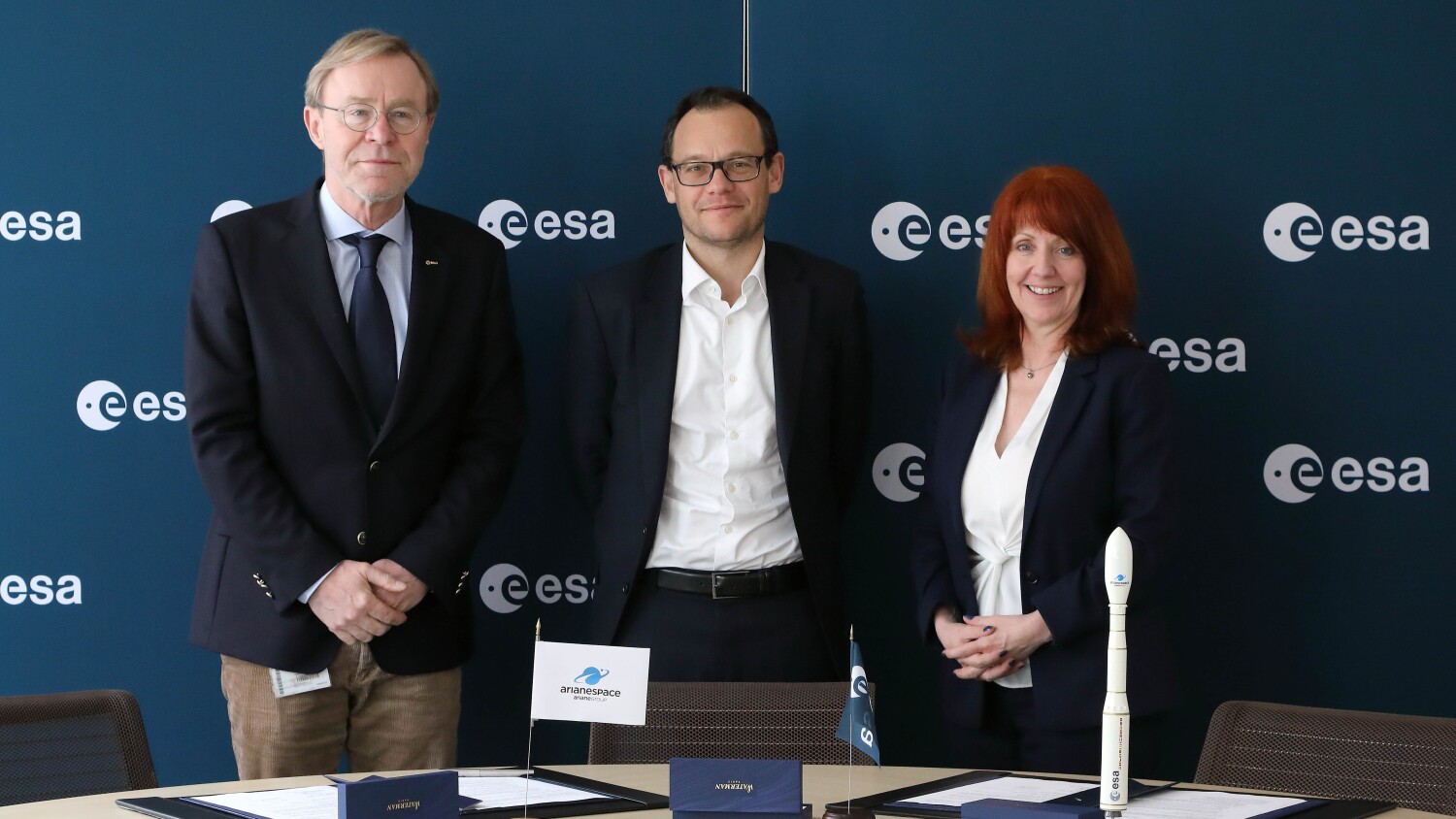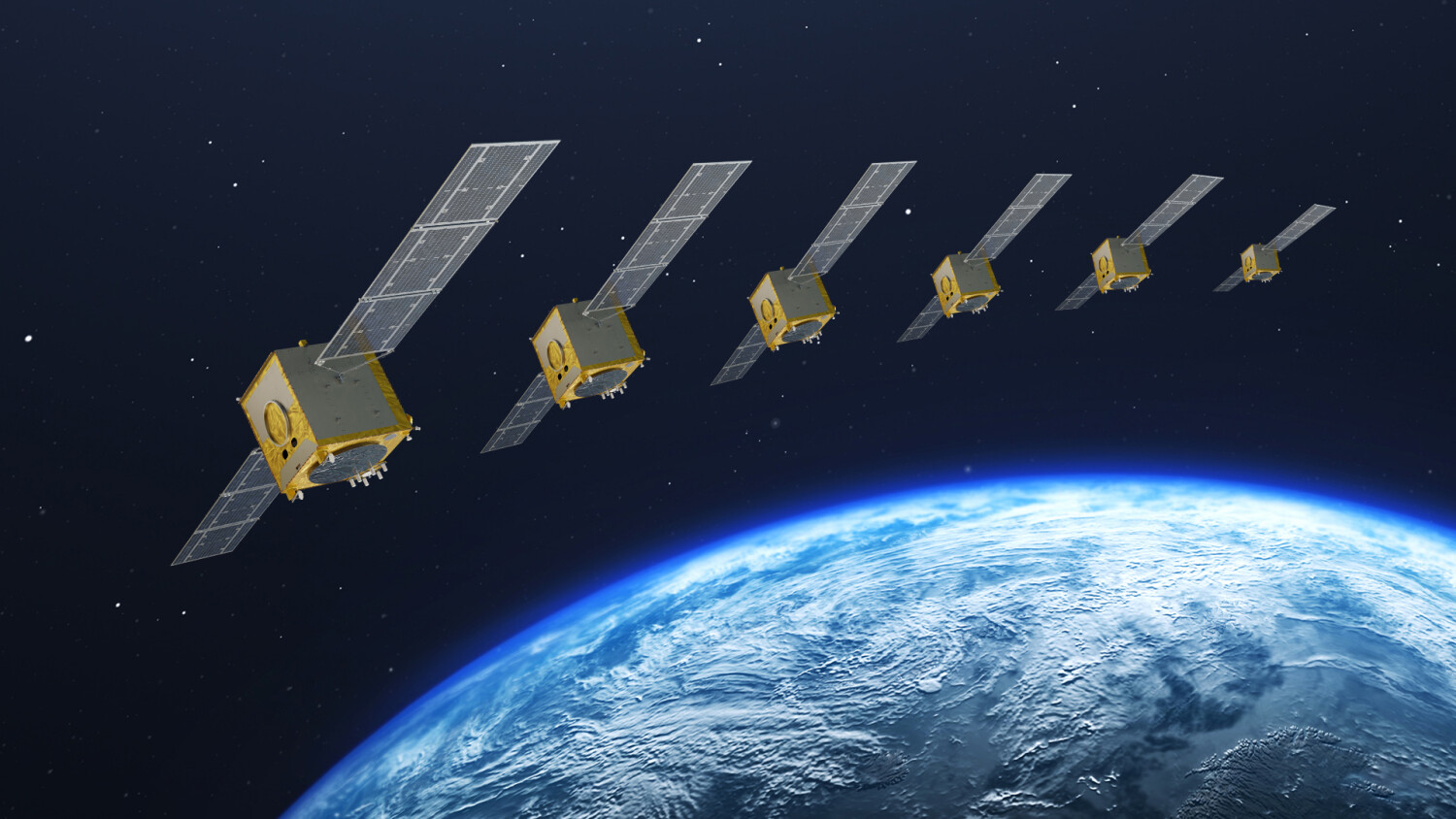On Thursday, December 19, 2013 at 6:12 am, local time in French Guiana, Arianespace successfully carried out the sixth Soyuz launch from the Guiana Space Center (CSG), orbiting the Gaia scientific satellite for the European Space Agency (ESA).
Today’s mission was the second successful Soyuz launch from CSG in 2013, and was the launcher’s sixth successful mission overall from CSG. Also in 2013, Arianespace used a Soyuz rocket to orbit the first four satellites for the O3b constellation in June.
An Arianespace launch at the service of science
 Arianespace has always supported the world’s leading scientific missions, enabling humankind to better understand our Universe. Gaia is the 25th scientific satellite to be launched by Arianespace, bringing a real breakthrough in understanding our galaxy, and create a 3D map of the Milky Way.
Arianespace has always supported the world’s leading scientific missions, enabling humankind to better understand our Universe. Gaia is the 25th scientific satellite to be launched by Arianespace, bringing a real breakthrough in understanding our galaxy, and create a 3D map of the Milky Way.
The launch of Gaia continues a long-standing and steady cooperation between Arianespace and ESA: it also is the 40th payload sent into orbit for the space agency, 28 years after the launch of Giotto – ESA’s first scientific satellite in July 1985 on an Ariane 1 (Flight 14).
In 2013, Arianespace carried out four Ariane 5 launches, orbiting the ATV Albert Einstein with supplies for the International Space Station and six telecommunications satellites, as well as the second Vega launch with satellites dedicated to sustainable development (Proba-V, VNREDSat-1 and ESTCube-1).
The “Soyuz at CSG” program that brought Soyuz to French Guiana carries on the long-standing space collaboration between Europe and Russia, and gives Europe a medium-lift launcher that perfectly complements its heavy Ariane 5 and light Vega launchers. Arianespace and its Starsem subsidiary also performed a Soyuz launch from the Baikonur Cosmodrome (Kazakhstan) in February 2013, orbiting six satellites in the Globalstar constellation.
With these three launchers now fully operational, Arianespace is the world’s only launch services company capable of lofting all types of payloads to all orbits, including communications, scientific and Earth observation satellites; constellations; cargo missions to the International Space Station, and more.
Just a few minutes after the announcement that Gaia had been injected into orbit, Arianespace Chairman and CEO Stéphane Israël said: “We are very proud of our third mission for ESA this year, following the successful launches of Proba-V and the ATV Albert Einstein. With our 3 operational launchers at CSG, we are especially proud of our ongoing role in guaranteeing independent access to space for Europe, and for the entire European scientific community in particular. I would like to thank ESA – Arianespace’s long-standing partner – for continuing to place their trust in us. My congratulations also go to Astrium and the 50 other companies in Europe that were involved in the construction of Gaia. And of course congratulations to our Russian partners within the Roscosmos agency for the remarkable reliability of the Soyuz launcher.”
The VS06/Soyuz ST-B/Gaia launch at a glance
The Soyuz ST-B launcher lifted off from the Soyuz Launch Complex (ELS) at the Guiana Space Center (CSG) in French Guiana. Liftoff was on Thursday, December 19 at 6:12:19 am local time in French Guiana (4:12:19 am in Washington, D.C., 09:12:19 UTC, 10:12:19 am in Paris, and 1:12:19 pm in Moscow).
Gaia satellite
Over its 5-year lifetime, Gaia will produce an astronomical catalog of a billion stars, with extremely precise information on the stars’ distance and positions, their movement and their magnitudes in different bandwidths. Through Gaia, scientists hope to clarify the structure, formation and evolution of our galaxy – the Milky Way – as well as making significant contributions to the knowledge of extrasolar planets, the solar system, other galaxies and fundamental physics. Gaia will generate a catalog 50 times larger than that provided by its predecessor, Hipparcos, launched by Arianespace for ESA in 1989.
Gaia features two telescopes for observations in two different directions. Three major scientific instruments, which share a focal plane, analyze the light collected by these telescopes: an astrometric instrument to measure the angular position of stars; a spectrophotometer to determine their spectrum; and a high-resolution spectrometer to measure their radial velocity.
Designed and built by Astrium for the European Space Agency, Gaia will be located at one of the five Lagrange points in the Sun-Earth system, at the L2 point. Lagrange points are located at points of gravitational equilibrium in our Solar System, where a body such as a satellite orbits around the Sun at the same angular velocity as the Earth, and therefore remains in a fixed position in relation to the Sun-Earth axis.







